
Not all grass types feel good underfoot. But the best grasses to walk on barefoot, such as improved common Bermudagrass and Kentucky bluegrass, combine soft texture and lush density to create a smooth, cushiony surface.
To have the best barefoot-friendly lawn, you must consider how the grass feels when walked on and how it holds up to foot traffic. We’ve asked a turfgrass expert to help identify which types of grasses are perfect for shoeless walking. Plus, we have a calculator to make things even easier for you.
Grass Match Calculator for a Barefoot-Friendly Lawn

1. Improved Common Bermudagrass
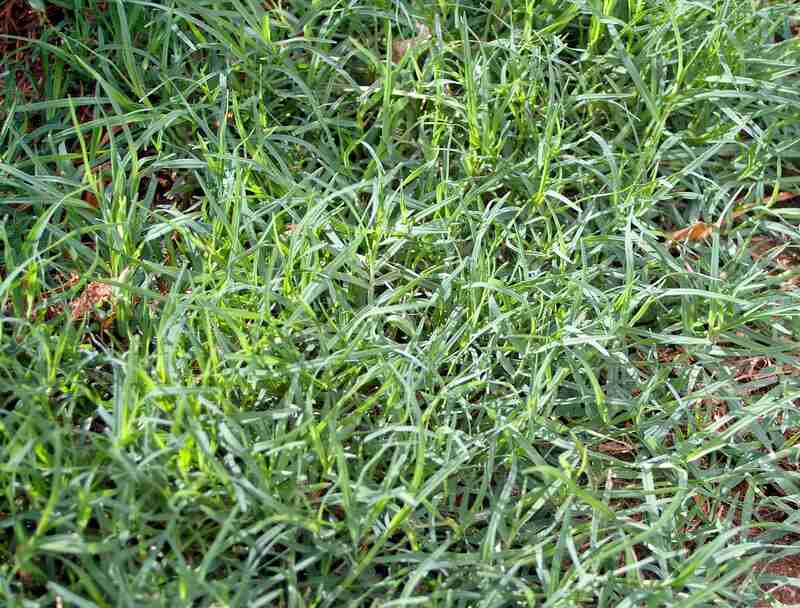
Photo Credit: Bidgee / Wikimedia Commons / CC BY-SA 3.0
Many homeowners are now enjoying the numerous health benefits of walking barefoot on grass, including lowering stress hormones and improving sleep quality. And if you’re living in the southern U.S., improved common Bermudagrass is your best option. It’s one of the best grasses to walk on barefoot, thanks to its soft, yet resilient, blades.
Known for its fine texture and bright green color, improved common Bermudagrass creates a dense, springy turf that feels smooth under bare feet. It thrives in hot climates and quickly forms a thick, uniform lawn that’s perfect for lounging or playing outdoors. It’s ideal for open areas and high-traffic yards that get plenty of sun.
According to Lambert McCarty, professor of turfgrass science and management at Clemson University, most people choose improved common Bermudagrass, “as seeds are readily available, and it germinates relatively quickly if planted at the correct time and properly maintained.”
- Classification: Warm-season grass
- Best for: USDA hardiness zone 6-10
- Foot traffic tolerance: High; recovers quickly
- Maintenance needs: Moderate to high; weekly mowing and monthly fertilizing during active growth
- Mowing Height: 1.5 inches
- Watering needs: Low to moderate; benefits from deep watering in summer
- Shade tolerance: Low; at least 6-8 hours of sun
- Special features: Fast-growing; better disease and pest resistance
| If you don’t want to do the weekly mowing yourself, you can hire a LawnStarter lawn care pro instead. Our customers pay around $51 for mowing a 1/4 acre lawn and give our pros an average rating of 4.5. |
Grass Seed Options:
– Pennington Bermudagrass Bare Spot (5 lb. bag)
– Pennington Smart Seed Bermudagrass Mix (8.75-lb. bag)
– Scotts Turf Builder Bermudagrass (10-lb. bag)
– Hancock Seed Co. Bermudagrass (50-lb. bag)
2. Kentucky Bluegrass
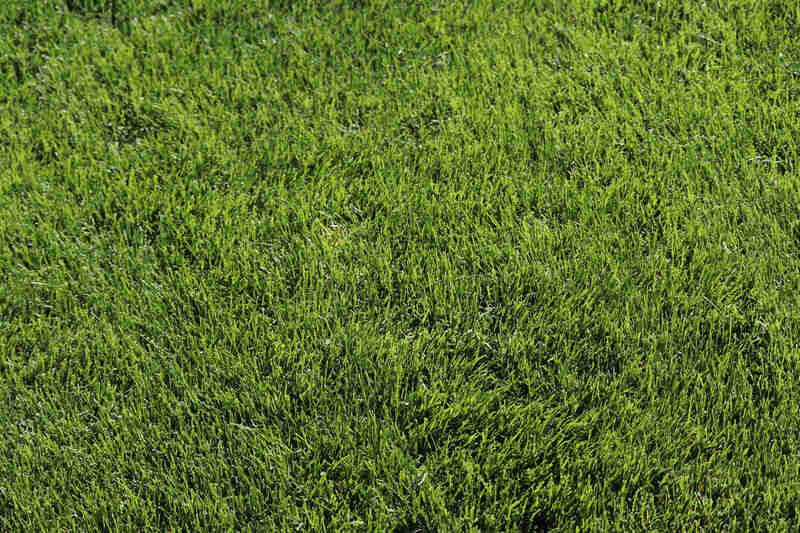
Photo Credit: Shutterstock
Prized for its soft, velvety feel and rich, emerald green color, Kentucky bluegrass is ideal for homes in northern regions. It forms a dense, fine-to-medium textured turf that feels incredibly lush underfoot, creating a comfortable, barefoot-friendly lawn.
Additionally, Kentucky bluegrass can self-repair, as it spreads via underground rhizomes. It’s a great choice for home lawns and open play spaces where beauty and comfort matter.
- Classification: Cool-season grass
- Best for: USDA hardiness zone 3-7
- Foot traffic tolerance: Low to moderate
- Maintenance needs: Moderate to high; regular mowing and fertilization
- Mowing Height: 2.5 inches
- Watering needs: Moderate; 1 to 1.25 inches of water per week
- Shade tolerance: Low to moderate; at least 6 hours of sunlight daily
- Special features: Spreads through underground rhizomes, aiding in the natural filling of bare spots and fixing dry patches
To make barefoot walking on your lawn more comfortable, Jack Fry, turf Extension specialist from Kansas State University, suggests mowing your grass on the low end of its recommended range. For example, the recommended mowing height for Kentucky bluegrass is 2.5 to 3.5 inches, so consider mowing it to 2.5 inches.
Grass Seed Options:
– Jonathan Green (11970) Blue Panther Kentucky Bluegrass Grass Seed (3 lbs.)
– SeedRanch Midnight Kentucky Bluegrass Seed (5 lbs.)
– Jacklin Seed – Biltmore Blue Blend – 100% Kentucky Bluegrass (5 lbs.)
3. No-Mow Fescue Blends

Photo Credit: Aaron Patton / Purdue’s Turfgrass Science Program
Homeowners who want a barefoot-friendly, yet low-maintenance, lawn can choose no-mow fescue blends that stay low-growing. A mix of fine fescue grasses, fescue blends grow slowly, forming a soft, wispy lawn with a relaxed, meadow-like look. With a fine, silky texture, this cool-season grass blend feels light and airy underfoot.
But while no-mow fescue blends need minimal mowing, they’re prone to thatch. And if you want to enjoy barefoot walking on grass, Fry says to avoid thatch accumulation, regardless of your grass type.
- Classification: Cool-season grass
- Best for: USDA hardiness zone 3-7
- Foot traffic tolerance: Low
- Maintenance needs: Very low; mowing is optional or needed once or twice a year
- Mowing Height: 2.5 inches
- Watering needs: Low; minimal watering once established
- Shade tolerance: High
- Special features: Dense growth suppresses weeds; deep root system enhances drought resistance
Grass Seed Options:
– Outsidepride Legacy Fine Fescue Grass Seed (5 lbs.)
– Eretz Creeping Red Fine Fescue Seed (choose your size)
– Outsidepride Creeping Red Fine Fescue Grass Seed (25 lbs.)
– Outsidepride Hard Fine Fescue Grass Seed (10 lbs.)
4. Perennial Ryegrass
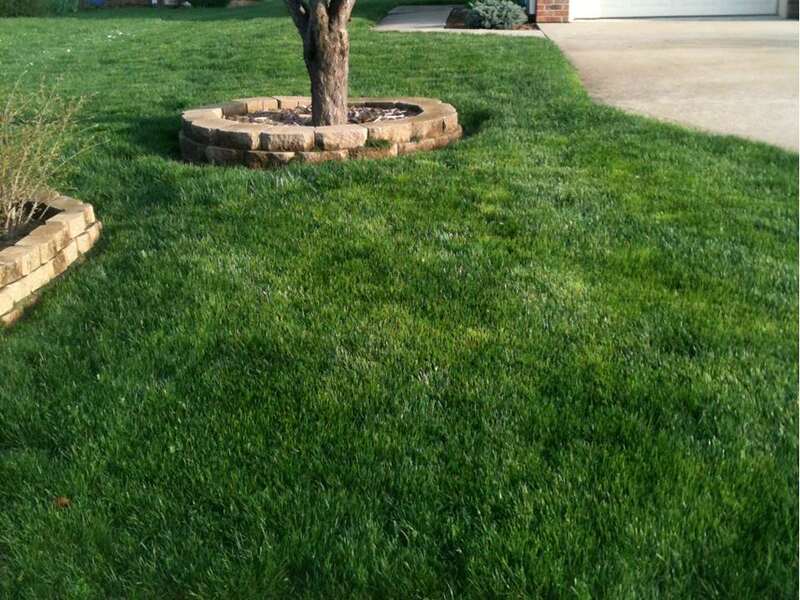
Photo Credit: Aaron Patton / Purdue’s Turfgrass Science Program
Another cool-season grass ideal for walking on barefoot, perennial ryegrass has a fine to medium texture and a glossy, rich green appearance that stands out in any lawn. It grows upright and dense, creating a soft, even surface that feels smooth under bare feet and looks manicured even with basic care.
Because of its rapid germination and quick establishment, perennial ryegrass is commonly used for overseeding and erosion control.
This grass performs well in less extreme northern regions and the transition zone. It’s ideal for home lawns, soccer fields, and public spaces where foot traffic tolerance and soft texture are priorities.
- Classification: Cool-season grass
- Best for: USDA hardiness zone 5-7
- Foot traffic tolerance: High; good wear tolerance, but damage must be overseeded
- Maintenance needs: Moderate; regular mowing and fertilization
- Mowing Height: 1.5 inches
- Watering needs: Moderate; prefers consistent moisture but tolerates short dry periods
- Shade tolerance: Low; needs at least 4 hours of sunlight
- Special features: Fast germination (within 5-10 days); often used for overseeding
Grass Seed Options:
– Outsidepride Perennial Ryegrass Seed (5 lbs.)
– Eretz ProTurf Perennial Ryegrass Fine Lawn Seed (choose your size)
5. Turf-Type Buffalograss
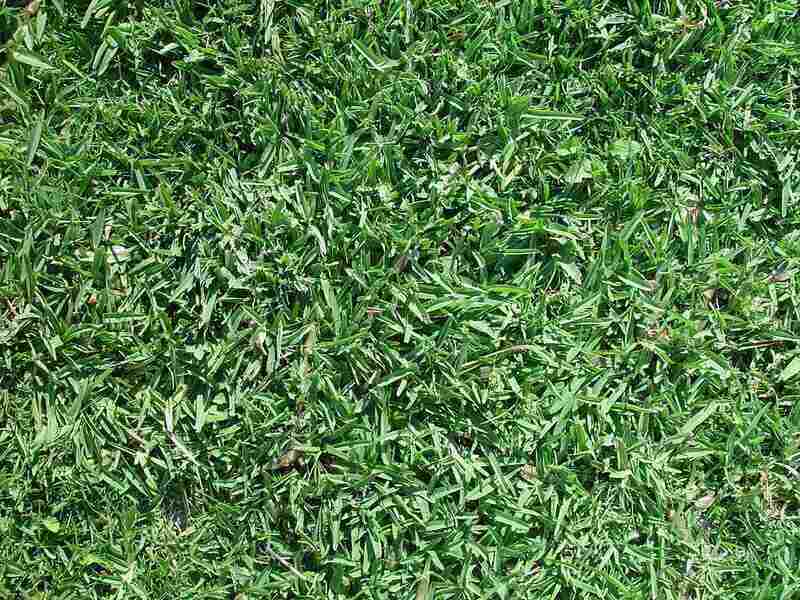
Photo Credit: Titus Tscharntke / Wikimedia Commons / Public domain
A native warm-season grass, turf-type buffalograss has fine, narrow blades and a soft, cushiony feel that’s surprisingly comfortable underfoot. It grows low and evenly, forming a light green, barefoot-friendly landscape with a natural prairie look. Turf-type buffalograss cultivars like Sundancer and Cody can tolerate moderate foot traffic.
Well-suited for dry, sunny climates across the central and western U.S., this slow-growing grass requires little mowing, watering, and fertilizing. It’s a top pick for eco-conscious homeowners who want a beautiful, yet low-maintenance, lawn.
Note: Buffalograss is not a good choice for the Eastern U.S. due to high rainfall.
- Classification: Warm-season grass
- Best for: USDA hardiness zone 4-8
- Foot traffic tolerance: Moderate
- Maintenance needs: Very low once established; mowing is optional
- Mowing Height: 2 inches
- Watering needs: Low once established; highly drought-tolerant
- Shade tolerance: Low; needs full sun (6+ hours daily)
- Special features: Native, requires less mowing, water, and fertilizer
Grass Seed Options:
– Everwilde Farms Buffalograss Seeds (1 lb. of seeds)
– Scotts Pursue Buffalograss with Natural Seed (1 lb. of seeds)
– Outsidepride Perennial Buffalo Grass Seed (2 lb. of seeds)
6. Zoysiagrass
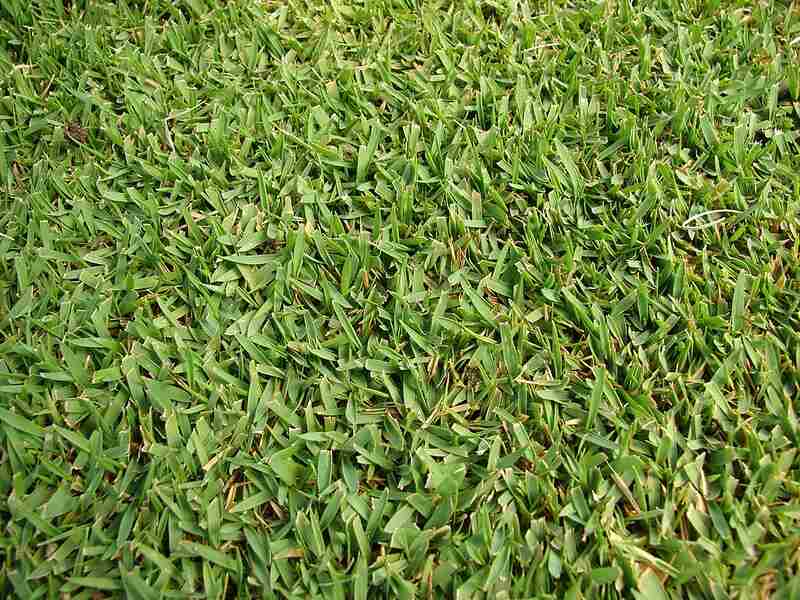
Photo Credit: Forest & Kim Starr / Wikimedia Commons / CC BY 3.0
Known for its thick, carpet-like texture and soft to firm blades, Zoysiagrass creates a resilient, barefoot-friendly surface. It has a light to medium green color and forms a dense turf that resists weeds and handles wear exceptionally well. Cultivars like Zeon and Emerald are both soft enough for barefoot walking and can tolerate moderate foot traffic.
Though it grows slowly, its ability to thrive in both sun and partial shade makes Zoysiagrass perfect for many homeowners in the southern U.S. and the transition zone. It’s ideal for home yards, sports fields, and sloped areas where you want a durable, attractive lawn.
This warm-season grass requires less watering and maintenance than other grass types. According to Fry, “Zoysiagrass requires minimal fertilization (1 to 1.5 lbs. of nitrogen/1,000 sq. ft. per year) after it’s established.”
- Classification: Warm-season grass
- Best for: USDA hardiness zone 5-11
- Foot traffic tolerance: Moderate to high
- Maintenance needs: Moderate; seasonal fertilizing and occasional dethatching
- Mowing Height: 1 inch
- Watering needs: Low; prefers deep, infrequent watering
- Shade tolerance: Moderate
- Special features: Dense growth resists weeds
Grass Plug and Seed Options:
– Zoysia Plugs (50 Large Grass Plugs)
– Zoysia Plugs (50 Full & Lush Grass Plugs)
– Zoysia Plugs (100 Plugs)
– Zoysia Emerald Grass Seeds (1/8 lb. of seeds)
– Zenith Zenith Grass Seeds (1/8 lb. of seeds)
FAQ About the Best Grasses to Walk On Barefoot
No-mow fescue blends and Kentucky bluegrass are among the softest grasses to walk on barefoot. Both have fine textures and dense growth, providing a smooth, cushiony surface.
It depends on the grass type and growing conditions. Some grasses take one full growing season to get thick and soft enough for barefoot use, but fast growers like perennial ryegrass can be comfortable underfoot within weeks.
Turf-type buffalograss and no-mow fescue blends are both low-maintenance and barefoot-friendly. They need minimal mowing, watering, and fertilizing once established.
While it’s not recommended to mix warm-season grasses, you can blend cool-season grass types to improve texture and resilience, especially in areas with varied sun exposure or foot traffic. Just make sure the grasses have compatible growing requirements.
Create a Lush and Beautiful Lawn That Feels Good to Walk On
The joy of walking barefoot on your lawn starts with choosing the right grass. Whether you’re drawn to the plush feel of Kentucky bluegrass or the low-maintenance charm of buffalograss, hire a LawnStarter pro to take care of your lawn. From seeding to regular lawn maintenance like mowing and fertilization, they can help ensure your lawn is perfect for barefoot walking.
Sources:
- “Extension Gardener Plant Toolbox.” North Carolina State University Extension.
- Jack Fry, professor and commercial turf Extension specialist at Kansas State University. Personal interview.
- Lambert McCarty, professor of turfgrass science and management at Clemson University. Personal interview.
- “Renovating a Lawn for Quality and Sustainability.” By Sam Bauer, associate Extension professor, and Jonah Reyes, natural resources technician. University of Minnesota.
- “Selecting a Lawn Grass for Oklahoma.” By Dennis Martin, Extension specialist. Oklahoma State University.
- “Turfgrass Information: Selection.” Kansas State University.
- “USDA Plant Hardiness Zone Map.” U.S. Department of Agriculture.
LawnStarter participates in the Amazon Services LLC Associates Program, an affiliate advertising program. LawnStarter earns revenue from products promoted in this article.
Main Image Credit: STGZ. / Adobe Stock generated with AI